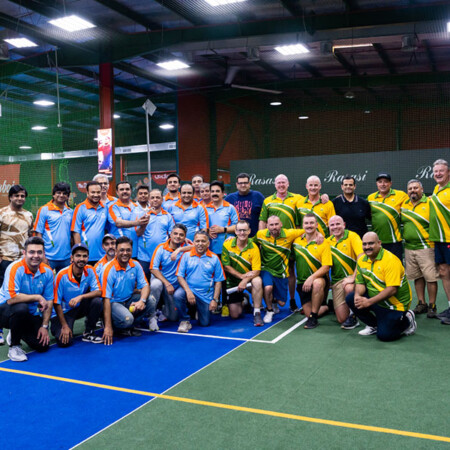Use your food, reduce your waste and help the environment
Would you like to help the environment? You can by reducing food waste. With a few tips it can be easy to reduce food waste and there is plenty we can do.

Would you like to help the environment? You can by reducing food waste. With a few tips it can be easy to reduce food waste and there is plenty we can do. One third of the world’s food gets wasted(1), with food waste costing Australia alone an estimated $20 billion a year(2) and the average Australian household around $3,800 per year. (3)
So how can we reduce this?
1. Eat what you need
Eat mostly wholefoods (e.g. fresh fruit, vegetables, nuts, seeds, legumes and grains) in amounts you need. It might sound strange but eating in excess, is a form of food waste, particularly of ultra processed food that offers little nutritional value (e.g. fried foods, packaged snacks, confectionary) (1). Could we be a little more mindful of our food choices and appetite and it’s effect on the environment?
2. Buy what you need
- Plan meals so you cook what you buy. No more unused limp, vegetables at the bottom of the fridge.
- Before you go shopping, look in the fridge, freezer and cupboards. Write a shopping list based on what you need and the meals you have planned. Consider:
- who is home this week?
- how many meals need preparing?
- what food needs using up?
- Including a leftovers night
- what is in season- this will be more economical, fresher and taste better
3. Be inventive
If there are a few unused foods in the pantry or fridge see what you can make. A pot of soup, a curry, risotto or savoury muffins can make use of a load of different ingredients. Extra almond meal can be added to muffins and slivered almonds sprinkled on top of a risotto.
- Freeze extra serves so they don’t get forgotten about at the back of the fridge
- Plan meals based on what you already have. Ask “what needs to be used first?” Get creative with leftovers. Extra roast vegetables can be added to top a home made pizza or mixed through a salad. A sprinkle of almonds and seeds on top adds extra crunch. Keep your almonds in jars that so you can easily see them in the fridge or pantry so you eat them while they are fresh.
4. Make the most of in-season produce
It is a great opportunity to buy fresh produce when it is in-season at it’s tastiest and often cheaper. Freeze, pickle, preserve or dry extras. That way you will have a supply throughout the year. For example:
- Squeeze lemon juice into ice cube trays and passionfruit pulp scooped into them too.
- Tomatoes can be made into pasta sauce, chutney, frozen or jarred for later.
- Mangoes and pineapple flesh can be frozen in cubes.
- Store almonds and almond meal in the fridge or freezer
- Fresh herbs can be stored in air-tight containers in the freezer
5. Know the difference between “best before” and “use-by” dates:
- Best before: The food supplier’s recommendation of when the product is at its ‘best’, therefore it is safe to eat for some time after this date. Use your discretion after the date.
- Use-by: The manufacturer’s guide to when the product should be eaten for food safety reasons. In general don’t eat over this date. Look at use by dates and plan to cook these foods up before or pop into the freezer before the date.
6. Rescue the aged
If you have some food that is close to being binned, see what you can do to save it:
- Milk can be turned it into ricotta cheese (heat and add vinegar).
- Ripe bananas can be saved in the freezer for smoothies or banana cakes.
- Stale bread can be made into bread crumbs and stored in the freezer.
- Extra almonds, almond meal or slivered almonds keep longer in the freezer. You could blend them up to also make nut butter
- Limp-looking vegetables can be made into soup or stock.
- Over ripe apples, pears, peaches and nectarines can be stewed for addition to cereal or yoghurt and make great desserts.
- Make some fresh muffins with your extra fruit and nuts.
There’s a misconception that buying healthy food can mean spending lots of money on fresh food that will perish before you’ve used it. While it’s true that nutritious foods are often perishable ones, it just takes a few quick tips and tricks to use food wisely and avoid having to throw it out. Research (4) also shows that healthy diets can be more affordable than current less healthy ones.
Enjoy a nutritious diet, in amounts you need and plan ahead to recue food waste and look after our environment. If you would like some recipes on how to use up leftovers try the Oz Harvest website
References:
- http://www.fao.org/save-food/resources/keyfindings/en/
- https://www.environment.gov.au/system/files/resources/4683826b-5d9f-4e65-9344-a900060915b1/files/national-food-waste-strategy.pdf
- https://dietitiansaustralia.org.au/smart-eating-for-you/smart-eating-fast-facts/food-and-food-products/food-waste-a-bigger-issue-that-youd-think/
- https://bmcpublichealth.biomedcentral.com/articles/10.1186/s12889-016-2996-y



